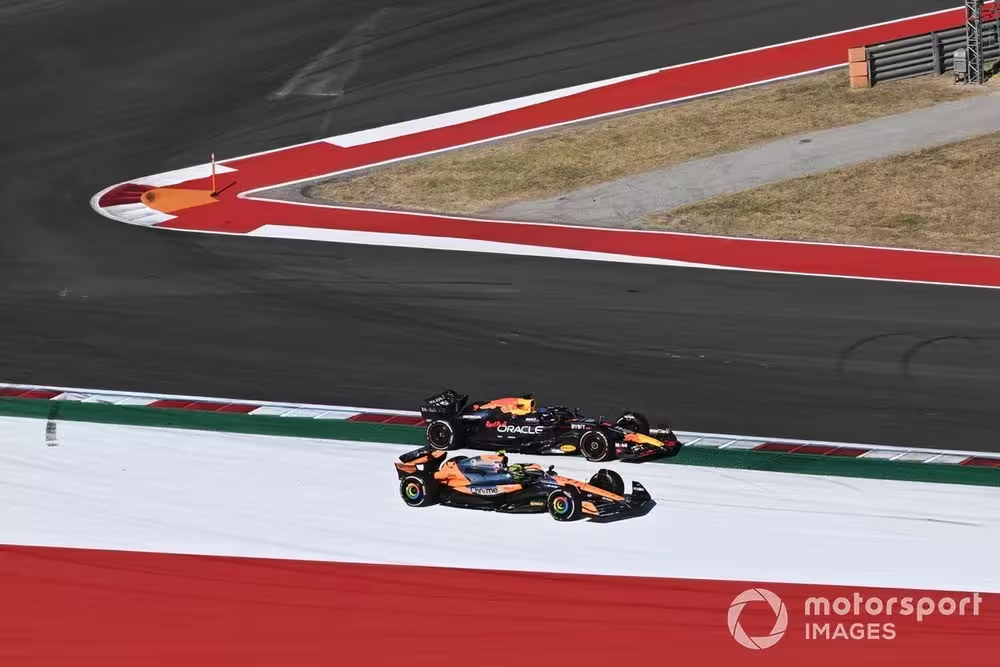Rather than celebrating two elite drivers racing on the edge or applauding Ferrari’s impressive one-two victory, talk after the US Grand Prix once again shifted to regulations, stewarding consistency, and track limits.
Verstappen followed F1’s racing guidelines, but are they fit for purpose?
The incident unleashed differing comments from both sides, with Red Bull pointing out Norris made an illegal overtake off the track – an argument which the race stewards followed – while McLaren argued that drivers shouldn’t be allowed to just crowd a competitor off the road.
As Verstappen has apparently understood better than anyone else, the current driving standards guidelines encourage the defending car on the inside to just release the brakes and ensure it is ahead at the apex without having to give the car on the outside any room at the exit, a line of thinking which makes overtaking around the outside even more difficult that it already was.
Mercedes was apoplectic that Verstappen didn’t get punished while George Russell did for a similar-looking offence driving Valtteri Bottas off, but because the Mercedes driver was the attacker and overtook on the inside, the guidelines say Russell did have the responsibility to leave a car’s width for the Sauber at the exit.
Interestingly, the guidelines are just written from the attacking car’s point of view, including the requirement to drive in a safe and controlled manner and be able to make the corner within the track limits. That Verstappen did not do so was a mitigating factor in Norris only getting a five-second penalty as opposed to 10, and also explains why Norris wasn’t penalised for his fourth track-limits offence.
Lando Norris, McLaren MCL38, battles with Max Verstappen, Red Bull Racing RB20
Photo by: Sam Bagnall / Motorsport Images
Then there is another interpretation for the first lap of a race, where stewards take a much more relaxed “let them race” approach. That means drivers are less afraid of having a go at each other at Turn 1 for fear of being penalised, but at the same time it doesn’t help fans understand where the consistency is.
It is clear that the guidelines are just that, and only indicative of how the stewards might judge a particular incident. They offer room for interpretation, which in this case Red Bull and McLaren did differently. Those guidelines are supposed to see widespread adoption across all levels of FIA sanctioned racing in 2025, down to…
Click Here to Read the Full Original Article at Motorsport.com – Formula 1 – Stories…

